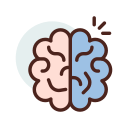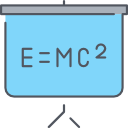Filter by
Found 304 from your keywords: callnumber=5

Animal Dads
- Edition
- ed.1
- Series Title
- Levelled Reading
- Call Number
- 590 Sch A
- Edition
- ed.1
- Series Title
- Levelled Reading
- Call Number
- 590 Sch A

A Seed Grows
- Edition
- ed.1
- Series Title
- Levelled Reading
- Call Number
- 580 Har A
- Edition
- ed.1
- Series Title
- Levelled Reading
- Call Number
- 580 Har A

Grow Tomatoes in Six Steps
- Edition
- ed.1
- Series Title
- Levelled Reading
- Call Number
- 590 Swe G
- Edition
- ed.1
- Series Title
- Levelled Reading
- Call Number
- 590 Swe G

This Is a Bird
- Edition
- ed.1
- Series Title
- Levelled Reading
- Call Number
- 570 Pag T
- Edition
- ed.1
- Series Title
- Levelled Reading
- Call Number
- 570 Pag T

A Taste for Blood
- Edition
- ed.1
- Series Title
- Levelled Reading
- Call Number
- 570 Cur A
- Edition
- ed.1
- Series Title
- Levelled Reading
- Call Number
- 570 Cur A

Sinkhole Science
- Edition
- ed.1
- Series Title
- Levelled Reading
- Call Number
- 500 McC S
- Edition
- ed.1
- Series Title
- Levelled Reading
- Call Number
- 500 McC S

Wildlife Rescue
- Edition
- ed.1
- Series Title
- Levelled Reading
- Call Number
- 590 Free W
- Edition
- ed.1
- Series Title
- Levelled Reading
- Call Number
- 590 Free W

Wonder of Nature
- Edition
- ed.1
- Series Title
- Levelled Reading
- Call Number
- 570 Rya W
- Edition
- ed.1
- Series Title
- Levelled Reading
- Call Number
- 570 Rya W
 Computer Science, Information & General Works
Computer Science, Information & General Works  Philosophy & Psychology
Philosophy & Psychology  Religion
Religion  Social Sciences
Social Sciences  Language
Language  Pure Science
Pure Science  Applied Sciences
Applied Sciences  Art & Recreation
Art & Recreation  Literature
Literature  History & Geography
History & Geography